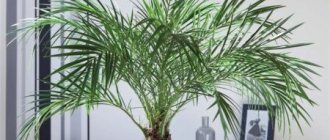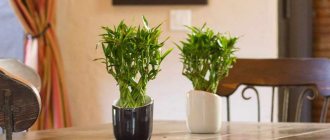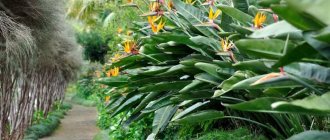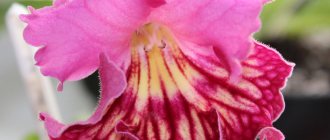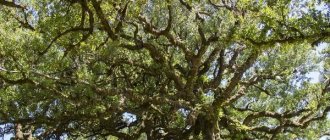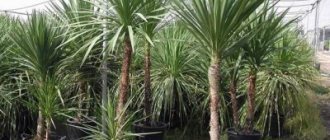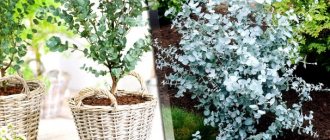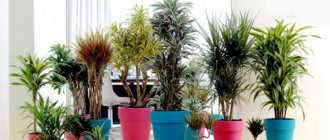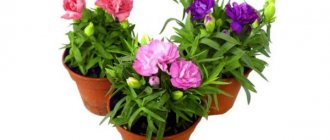Seeing this interesting indoor plant in a flower shop window or in a photo, it is impossible not to hold your gaze on it. This multi-colored “polka dot wonder” looks absolutely adorable, but not for long. Because of this, hypoestes often causes a negative attitude from gardeners, which is strengthened by its “bad habit” of littering seeds around itself and in neighboring flower pots. But optimists can rejoice that they will not have any problems with the reproduction of this very unpretentious perennial, the rules for caring for it at home are quite simple.
General information about origin
Hypoestes is a plant from the island of Madagascar, from where it very quickly spread throughout the tropical latitudes of the whole world. Its invasive spread is not always a cause for joy for local residents, since it invades new territories and displaces some indigenous plant crops. Some types of insects are also not happy about it, for example, Costa Rican butterflies that lay eggs on its leaves. The plant turns out to be unsuitable for feeding the hatched caterpillars, which is why they die.
Biological description with photo
The overseas plant is classified as a member of the Acanthus family and exists in two plant forms: as a compact herbaceous perennial and as a branched subshrub or shrub. However, good branching is inherent in all varieties of this crop. The petiolate leaves are ovoid in shape with a slight waviness along the edge and pronounced venation, located oppositely. The main color of the leaf blade is green (less often purple), with many light spots scattered across it, which can be white, beige, pink, carmine and deep red.
The root system is predominantly superficial, softly fibrous, branched.
Hypoestes flowering
The flowers are semi-umbrellas covered with bracts, which is what gave the flower its name (hypoestes literally means “under the house”). There can be from one to three buds located under the base of the bracts.
Flowering is not one of the main advantages of the crop, since it passes quickly, and its consequences are not very favorable. In addition to the fact that weed seeds quickly and regularly germinate in pots of a wide variety of flowers, the plant itself suffers. After flowering, it stretches out, becomes smaller in leaves, and loses its spotted decorative appearance. Its long, half-naked branches look very unattractive. The flowers themselves, falling off, produce a lot of debris.
Once the specimen is about to bud, the smartest solution is to remove the flower frog to avoid the “disaster” described above.
Main varieties with photos
Botanists have officially described more than 1.5 hundred varieties of hypoestes, but the vast majority of them are unsuitable for home breeding. Only a few of them are found in culture.
Hypoestes blood red
Semi-shrub evergreen species with strongly branching shoots. It can grow up to half a meter in height. The leaf blades are dark green with purple-red small peas. Their shape is narrowed, ovoid with solid, uncut wavy edges. Venation of the same red color is well expressed. The flower has a white throat and a light red bract.
Hypoestes phylum
It is very similar to the previous species in shape and size, but differs in the purple hue of the leaves. The spots are light pink, pronounced, occupy a large area of the leaf plate. Many varieties of this species have been developed, the shape of which may differ from the original variety.
Mix
On sale you can find mixed hypoesthes seeds - this is a set of varieties of different shapes and colors. When creating a plant group, such planting looks very impressive.
Common varieties
Codiaum: home care and methods of reproduction
Hypoestes has a sufficient number of species. Most of them are not suitable for growing at home. The following varieties are most often planted in pots on window sills.
Hypoestes Phyllostacha (leaf)
Hypoestes phyllostachya feels great if planted indoors. This species is also known as Hypoestes phylum. People call the flower “freckled face” because of the large number of specks on its leaves. The purple-red background color of the foliage, which looks very unusual, gives the plant a special decorative appearance.
Hypoestes can be grown both at home and outdoors
Interesting. Hypoestes phyllospica can be grown with equal success on a windowsill and in the garden (in relatively mild climatic conditions).
Hypoestes Mix
Hypoestes Mix is also called “Confetti”. It includes a large number of subvarieties, including:
- Red-raspberry;
- White;
- Crimson;
- Red wine.
From the name of the variety it becomes clear that the colors can be very different. Semi-lignified succulent stems and leaves with well-drawn veins are typical for Mixes. The length of the foliage, depending on the subspecies and growing conditions, can vary from 8 to 10 cm.
Hypoestes pink
Hypoestes rosea has another name - Pink Veil. This variety is considered fast-growing; it is often propagated from seeds at home. The foliage of this variety is characterized by the presence of a large number of soft pink spots on a bright green background. Since pink hypoestes has a compact size and rarely grows above 20 cm, it is often planted in apartments.
Home care
Growing hypoestes is not at all difficult if you monitor its reproductive activity.
Light mode
Southern exotic is demanding of light, but does not like direct sun. If it lacks illumination, this will immediately affect its shape and color. It will lose its attractive compactness and bright spotting, the branches will begin to stretch and thin out. In winter, it can be safely placed on a south window; in summer, an eastern or western orientation is preferable.
Temperature
The plant is thermophilic due to its tropical origin, but it does not require any greenhouse conditions. It is advisable to keep it in slightly cooler conditions in winter than in summer, but not allow the temperature to drop below +17C.
Hypoestes does not like drafts and sudden temperature changes.
Air humidity
The requirements are dictated by the conditions of the wild nature of the tropics. The plant loves high humidity, but can easily tolerate short periods of dry air. Nevertheless, each spraying will be expected and joyful for him, even several times a day. To make your task easier, you can place a container of water nearby. It is convenient to gather all the moisture-loving indoor plants around it.
Watering mode
Abundant watering during the period of active growth is one of the points of care for hypoestes that should not be neglected. It is permissible for only the top layer of soil to dry out. If the soil dries out at least half on a hot day in summer, the plant will begin to shed its leaves. With the arrival of cold weather, watering begins to be reduced. In winter, after the top layer has dried, you can wait another day or two before the next watering.
Fertilizers
The approach to fertilizing is standard. Starting from March and until the onset of persistent cold weather, mineral complexes are applied every 2-4 weeks. The rest of the time the plant does not need to be fed. Complexes must be selected taking into account the low nitrogen content and the predominance of potassium; this is necessary to maintain the decorative color of the foliage.
Hygiene
This care item is also very important, and not only from the point of view of the weediness of the plant, but also its decorative value. In addition to the timely removal of flower buds (and preferably at the stage of releasing the flower arrow, if there is no goal of collecting seeds), radical spring pruning and maintenance throughout the growing season are recommended. The compactness of the bush is well regulated by spring radical pruning, when only stumps of 3-4 cm in height are left from the specimen. After this, you need to greatly reduce watering until a new period of active growth begins. Periodic warm showers will also help.
In the interior, hypoestes goes well with non-flowering green-leaved crops with even, uniform foliage color.
Diseases and pests
The appearance of diseases and pests is associated with improper care. Let us describe the main problems that may arise when growing hypoestes:
- Yellowing or wilting of foliage occurs due to a lack of moisture in the soil. In some cases, it is necessary to increase the number of waterings or humidify the air in the room.
- The loss of variegated leaf color indicates a lack of lighting. Additional illumination with phytolamps can solve the problem.
- Falling of the leaves of the crop is observed with a sharp change in indoor climate, drying out of the soil and drafts.
In addition to diseases, the flower can be affected by pests, for example, scale insects, thrips or spider mites. To prevent the appearance of parasites, it is necessary to constantly inspect the plant and remove insects . When parasites develop intensively, the crop is treated with folk remedies or sprayed with insecticides.
Learn to properly care for hypoestes and it will reward you with lush and variegated foliage. This beautiful plant will fit well into any interior.
Hypoestes transplant
Produced every 2-3 years if the same specimen is grown. Many people prefer to replace the plant with a new one at the same frequency, especially since this does not present any difficulties or hassle. Replanting should not be combined with pruning, as this will be too stressful. Part of the earthen coma can be preserved and drainage must be provided.
Soil composition
Hypoestes does not make any great demands on the soil; any ready-made composition for flowering indoor crops is suitable for it. When preparing the substrate yourself, it is worth taking into account the desired pH level of 5-6 units. As components, you can take humus, high peat, leaf soil and add a little sand to them.
Application
Hypoestes is often used to decorate apartments and premises.
In the West, it is often used as an annual plant in tree decorations, thereby adding a great look to home gardens or even community gardens.
Domestic flower growers often combine several varieties of hypoestes in a pot, thereby making small compositions. At the same time, we can say that the plant tolerates any type of flowers well, so it can be planted next to any plants.
Hypoestes is also possible when decorating land plots. Some gardeners prefer to make small greenhouses around the plant in the winter, preventing it from dying, and there are those who use it as annuals.
Reproduction
There are two ways to obtain young seedlings - seeds and cuttings. The first option is easily accessible if you have a flowering specimen; just wait for new shoots to appear in the same or in an adjacent pot. If desired, you can collect the seeds after the bud blooms and plant them specially. It will take only 3-4 months until you receive an almost adult specimen.
Cuttings
The method is available almost all year round. The size of the cutting does not matter, the main thing is that it has at least a couple of internodes. To root, just put it in a glass of water or dig it into the ground. If you cover the cutting with a jar or plastic bottle, everything will happen even faster.
When leaving home on vacation, you need to take care of regular watering of the hypoestes, because this is not a plant that can “suffer.” It will most likely be impossible to restore its decorative appearance after experiencing a drought.
Watering
Abundant, but in moderation. Do not overdry or over-moisten the soil.
When the soil dries out, the plant begins to shed its leaves.
When flooded, the roots may rot.
Use soft, settled water, slightly warmer than room temperature.
In the autumn-winter period, watering is gradually reduced, but care is taken to ensure that the soil does not dry out completely.
The plant requires high humidity; if there is a lack of it, the leaves dry out. To further humidify the air, the plant is sprayed in the morning and evening. You can place a container of water nearby - as the water evaporates, it will provide additional air humidification.
Possible growing problems
- Leaf plates wrinkle - too dry air or too much direct light.
- The specimen drops its leaves - placed in a draft, lack of watering, a sharp drop in temperature or kept too cold.
- If the tips of the leaves dry out, it is necessary to increase the humidity in the room.
- Withering of leaves and their yellowing - the plant is overwatered, especially against the backdrop of cold temperatures.
- The leaves become spotted and turn pale - there is not enough light or there is an excess of soil nitrogen.
- Brown spots on the leaves are the result of sunburn.
Despite the bright, alarming color of the foliage, the plant is not at all poisonous.
